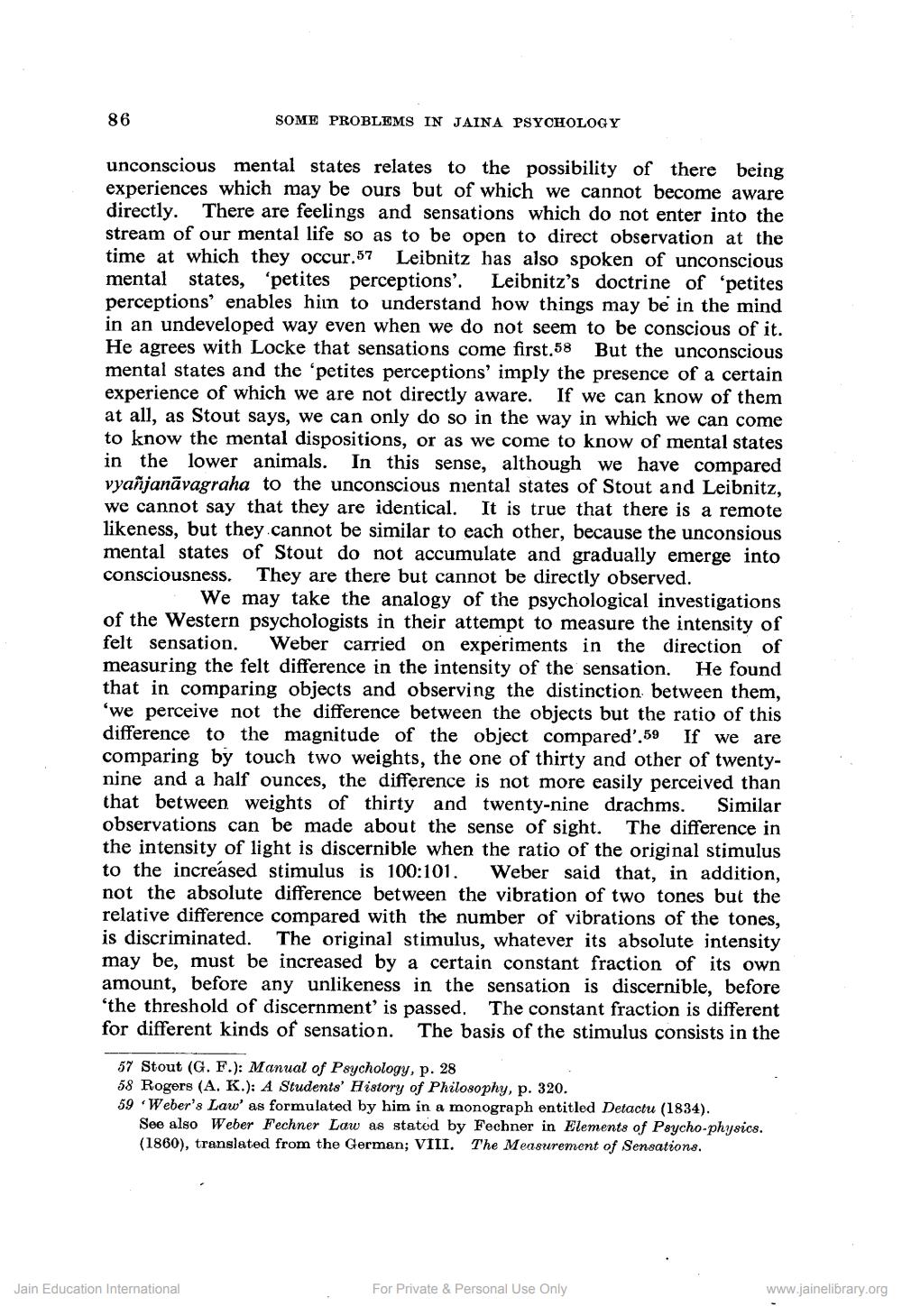________________
86
SOME PROBLEMS IN JAINA PSYCHOLOGY
unconscious mental states relates to the possibility of there being experiences which may be ours but of which we cannot become aware directly. There are feelings and sensations which do not enter into the stream of our mental life so as to be open to direct observation at the time at which they occur.57 Leibnitz has also spoken of unconscious mental states, 'petites perceptions'. Leibnitz's doctrine of 'petites perceptions' enables himn to understand how things may be in the mind in an undeveloped way even when we do not seem to be conscious of it. He agrees with Locke that sensations come first.58 But the unconscious mental states and the 'petites perceptions' imply the presence of a certain experience of which we are not directly aware. If we can know of them at all, as Stout says, we can only do so in the way in which we can come to know the mental dispositions, or as we come to know of mental states in the lower animals. In this sense, although we have compared vyañjanāvagraha to the unconscious mental states of Stout and Leibnitz, we cannot say that they are identical. It is true that there is a remote likeness, but they cannot be similar to each other, because the unconsious mental states of Stout do not accumulate and gradually emerge into consciousness. They are there but cannot be directly observed.
We may take the analogy of the psychological investigations of the Western psychologists in their attempt to measure the intensity of felt sensation. Weber carried on experiments in the direction of measuring the felt difference in the intensity of the sensation. He found that in comparing objects and observing the distinction between them, ‘we perceive not the difference between the objects but the ratio of this difference to the magnitude of the object compared'.59 If we are comparing by touch two weights, the one of thirty and other of twentynine and a half ounces, the difference is not more easily perceived than that between weights of thirty and twenty-nine drachms. Similar observations can be made about the sense of sight. The difference in the intensity of light is discernible when the ratio of the original stimulus to the increased stimulus is 100:101. Weber said that, in addition, not the absolute difference between the vibration of two tones but the relative difference compared with the number of vibrations of the tones, is discriminated. The original stimulus, whatever its absolute intensity may be, must be increased by a certain constant fraction of its own amount, before any unlikeness in the sensation is discernible, before “the threshold of discernment is passed. The constant fraction is different for different kinds of sensation. The basis of the stimulus consists in the
57 Stout (G. F.): Manual of Psychology, p. 28 58 Rogers (A. K.): A Students' History of Philosophy, p. 320. 59 Weber's Law' as formulated by him in a monograph entitled Detactu (1834).
See also Weber Fechner Law as stated by Fechner in Elements of Psycho-physics. (1860), translated from the German; VIII. The Measurement of Sensations.
Jain Education International
For Private & Personal Use Only
www.jainelibrary.org




